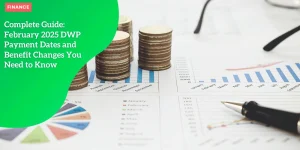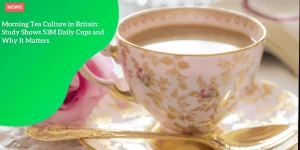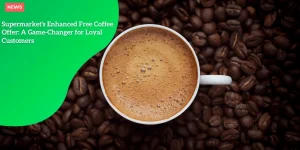How the New Alcohol Tax System Will Impact Your Favorite Drinks: A Comprehensive Breakdown
Anúncios
Understanding the New Alcohol Duty System
Calculation Based on ABV
Alcohol duty in the UK is calculated based on the Alcohol By Volume (ABV) of the drink.
ABV is simply the percentage of pure alcohol in a beverage and is typically displayed on the label.
Anúncios
Under the system implemented in August 2023, any alcoholic drink with more than 1.2% ABV is subject to this tax, and higher rates are imposed for every extra 0.1% in strength.
This approach is intended to promote public health by discouraging the consumption of cheap, high-strength alcohol.
Anúncios
Changes Taking Effect From February 1st
Beginning on February 1st, the UK government will update the alcohol duty structure, introducing several significant changes:
- 🍺 A 1p reduction in duty for draught drinks with less than 8.5% ABV.
- 🍺 A 3.6% increase in duty for non-draught alcohol to match inflation.
- 🍺 The introduction of 30 new tax bands for wines between 11.5% and 14.5% ABV, replacing the single flat rate that was previously applied during the “easement” period.
These changes aim to balance support for the hospitality sector with efforts to encourage healthier drinking habits.
Promoting Public Health Through Pricing
The restructured tax system seeks to promote public health in a nuanced way.
By increasing the cost of high-strength drinks, it discourages their consumption while making lower-strength options more affordable.
This strategy helps mitigate issues related to alcohol misuse and encourages moderate drinking habits among consumers.
The government’s adjustments are a blend of fiscal policies designed to support both the economy and public health.
As we progress, we’ll see how these tweaks play out across different alcoholic beverages and their markets.
 Price increases may lead to improved health
Price increases may lead to improved health
Good News for Pub-Goers: The Draught Relief
Pub-goers, there’s a bit of light at the end of this tunneling duty increase.
Amid the series of alcohol duty changes slated to take effect from February 1st, one particular adjustment stands out favorably for fans of draught beers: a 1p reduction on draught drinks under 8.5% ABV.
Let’s break down what this means for you and the hospitality sector.
Details of the 1p Reduction
The UK government’s new duty system will include a 1p reduction per pint on draught drinks with an ABV (Alcohol By Volume) of less than 8.5%.
While a penny might seem insignificant, it’s a strategic move aimed at benefiting pubs and bars, which have been hit hard by rising costs and the lingering impacts of the pandemic.
Targeting the Hospitality Sector
So, why the hospitality sector? Draught drinks are a significant portion of pub sales, accounting for over 60% of all drinks sold in these venues.
By reducing the duty on these beverages, the government aims to provide a bit of relief to pubs, encouraging more footfall and, hopefully, more sales.
The specific focus on draught drinks is a nod to the social aspect of drinking—promoting support for local businesses where people gather and socialize.
Potential Impact on Pub Prices and Consumer Savings
But what does this mean for your wallet? In practice, the 1p reduction per pint is quite minor, and it might not be noticeable when you’re out with friends.
However, for the hospitality sector, it means a collective saving predicted to amount to £85 million overall, according to the Treasury.
While publicans might not pass the exact savings on to you due to other rising costs, there could be indirect benefits such as more stable pricing or better promotional offers, ultimately enhancing your pub-going experience.
This change might seem small in isolation, but it’s part of a bigger picture designed to assist local pubs and encourage communal, less harmful drinking habits.
As always, how these savings are reflected in your local pub will vary, but every bit counts towards keeping the doors open and the taps flowing.
Now that we’ve delved into the nitty-gritty of draught drink relief, let’s explore how these changes will have a notably different impact on wine lovers.
Wine Drinkers Face the Biggest Changes
Introduction of 30 New Tax Bands
Wine enthusiasts, brace yourselves! From February 1st, the UK government is rolling out a hefty revision in the wine tax system.
The most significant shift is the introduction of 30 new tax bands for wines with an Alcohol By Volume (ABV) between 11.5% and 14.5%.
Previously, wines in this range were subject to a flat £2.67 tax rate.
Under the new system, every 0.1% increase in ABV within this range will mean additional duty.
Expected Price Increases
This change is expected to increase the price of about 43% of wines.
Wines with higher alcohol content, particularly red wines, will be most affected. For example, the tax on a 14.5% ABV bottle of wine will rise by 54p.
The Wine and Spirits Trade Association suggests that these hikes might cost consumers millions in the upcoming year.
For every 250ml glass of wine at 13% ABV, you’re looking at an 8p increase—4p from the inflation rise and 4p from the new tax rule.
End of ‘Easement’ Period
Adding to the complexity, the 18-month easement period is ending.
During this phase, all wines within the 11.5% to 14.5% ABV bracket paid a fixed rate.
With the easement period concluding, wines in this range will now be taxed according to their precise ABV, leading to more nuanced and often higher pricing.
This has been a subject of concern for both consumers and industry stakeholders who feel the new system could diminish wine sales.
The broader implication is a significant reshaping of pricing dynamics in the wine market.
Whether these changes will encourage more responsible drinking habits or simply dissuade consumers from purchasing their favorite wines remains to be seen.
As the industry adapts to these new regulations, other alcoholic beverages, including spirits and bottled beers, are also undergoing crucial changes.
Impact on Other Alcoholic Beverages
The upcoming changes to the UK’s alcohol tax system will not only affect draught drinks and wines but also have significant implications for other alcoholic beverages like spirits, bottled beer, and cider.
Understanding these modifications will help prepare consumers and businesses for the new pricing landscape.
Changes to Spirit Prices
The new alcohol duty system introduces inflation-linked duty increases of 3.6% on non-draught alcohol. This rise affects a wide range of spirits, including popular choices such as gin and whisky. For example, consumers can expect the price of a standard bottle of gin to increase by approximately 32p.
Whisky enthusiasts will also feel the pinch, with the cost of a single shot of 40% ABV whisky rising by around 1p per shot.
Effects on Bottled Beer and Cider Pricing
Unlike draught beverages that benefit from a tax reduction, bottled beer and cider are not as fortunate.
With the general increase in alcohol duties, a 500ml container of 5% ABV cider will see a price hike of about 1p.
While this may seem minor, it adds up over time and across multiple purchases, impacting both consumers and the hospitality sector.
Inflation-Linked Duty Increases on Non-Draught Alcohol
The 3.6% increase on non-draught alcohol prices is essentially tied to the Retail Prices Index (RPI) to keep up with inflation.
This inflation-linked adjustment aims to ensure that the duty rates remain consistent with the broader economic conditions, although it does mean higher prices for consumers purchasing non-draught alcohol.
The upcoming changes in the alcohol duty system will undoubtedly influence the choices that consumers make.
As the modifications take effect, both consumers and businesses will need to adapt to the new pricing structures.
Industry Response and Future Implications
Reactions from Industry Organizations and Stakeholders
The introduction of the new alcohol duty system has evoked mixed responses across the industry. Some organizations acknowledge the potential benefits to public health and the hospitality sector.
However, others are not entirely convinced about the efficacy of these measures.
The most positive feedback comes from those who view the draught relief as a lifeline for pubs.
In particular, the Treasury’s prediction that the draught duty reduction will save the hospitality industry £85 million is seen as a silver lining.
For regular pub-goers, this change could translate to slight savings on their favorite pints.
Wine sellers and some industry groups have less optimistic opinions.
The Wine and Spirit Trade Association warns of higher prices for consumers and potential profit dips for businesses.
Their chief executive, Miles Beale, argues that the new tax bands could backfire by reducing overall sales: “There are no winners under the UK’s punishing alcohol tax regime.”
Effectiveness in Supporting the Hospitality Sector
Concerns persist about the effectiveness of these measures in fully supporting the hospitality sector.
Michael Kill, chief executive of the Night Time Industries Association, goes so far as to call the measures “meaningless for businesses already buckling under the strain of rising costs and taxation.”
Critics argue that the savings from the draught relief are negligible and that more substantive reforms are needed to provide relief.
The true measure of success will be if these duty adjustments result in increased footfall and revenue for pubs and clubs.
Some stakeholders fear that additional costs from increased wine and spirit prices could exacerbate financial stress for establishments already struggling with high operational costs.
Potential Long-Term Effects on Businesses and Consumer Choices
In the long run, businesses might need to adjust their strategies significantly.
The new tax bands on wine, for instance, could lead wineries to reconsider the alcohol content of their products in order to benefit from lower duty rates.
This, however, could affect the variety and quality of wines available on the market.
Consumers are likely to feel the pinch as well.
With prices on many wines rising, people might opt for lower-ABV options or seek alternatives, changing the landscape of alcohol consumption.
This shift in consumer behavior could lead to an overall reduction in alcohol consumption, which aligns with public health goals.
Looking ahead, the industry will need to remain adaptable, and businesses might need to innovate in order to stay competitive and meet changing consumer demands.
The impact of these changes will continue to unfold, influencing business strategies and consumer decisions well into the future.






